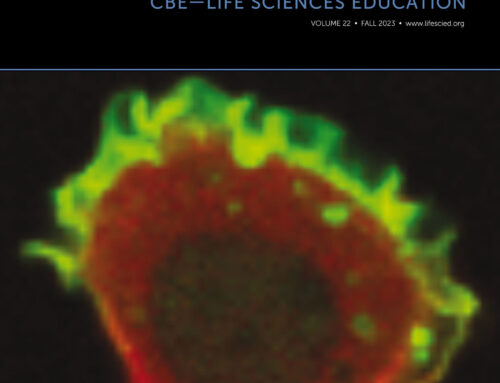Notice Number: NOT-OD-16-027
Key Dates
Release Date: November 19, 2015
Response Date: December 28, 2015
Related Announcements
NOT-OD-16-024
Issued by
National Institutes of Health (NIH)
Purpose
The NIH Advisory Committee to the Director (ACD) charged a Working Group with analyzing the composition and size of the physician-scientist biomedical workforce (defined as individuals with MD, DO, DDS/DMD, DVM/VMD degrees and nurses with research doctoral degrees who devote the majority of their time to biomedical research), and with making recommendations for actions that should be taken to sustain and strengthen it. The Physician-Scientist Workforce Working Group (PSW-WG) had several meetings and produced a report in June 2014 that contained nine recommendations for action (http://acd.od.nih.gov/reports/PSW_Report_ACD_06042014.pdf). Recommendation 8, which is the focus of the RFI, stated:
NIH should intensify its efforts to increase diversity in the physician-scientist workforce. This Working Group recognized major deficiencies of the physician-scientist workforce with regard to diversity. The PSW-WG strongly endorses the previous recommendations of the preceding biomedical workforce Working Group and the Working Group on diversity, all of which should be extended to the physician-scientist workforce.
In response, an internal implementation group has determined that the most efficient way to address this recommendation is to identify unique trajectories, potential systematic or structural barriers, and successful strategies to enhance the diversity of the PSW. Additionally, NIH is seeking comments on whether programs exist that provide clinicians with the necessary skill sets to perform high quality, high impact independent biomedical research, whether it is obtaining a dual degree or by an alternative pathway. Comments may be provided in the Information Requested section.
Background
NIH has identified several key components along the pathway to becoming a physician-scientist that may impact career choices for those with physician-scientist aspirations. These components which may be particularly relevant for persons from underrepresented groups to persist in the physician-scientist workforce are as follows:
- Educational pathways
- Institutional and programmatic characteristics of degree programs
- Career decision points and pathways
NIH has compiled factors (listed below) related to these three components and is seeking information in addition to those identified here. Specifically, NIH is requesting comments as described in the Information Requested section below.
1. Educational Pathways. Physician-scientist career pathways generally are considered to be conventional, linear “pipelines,” which may not be the most practical pathway for all trainees. Below are factors that may influence the linearity of the pathways to becoming a physician-scientist.
- Social and Environmental Factors
- Family income and net worth
- National origin of parents (e.g., U.S. citizenship)
- Parental educational attainment
- Parental or family member occupations (e.g., family members in a biomedical field)
- Knowledge and timing of becoming interested in the physician-scientist career pathway
- Family composition, structure, and responsibilities
- Neighborhood characteristics (e.g., safety, access to libraries and internet)
- Race/ethnicity, gender, disability
- Cross-cutting issues (e.g., women of color may be doubly impacted by the intersection of race and gender)
- K-12 Educational Factors
- Quality of curriculum (e.g., access to Advanced Placement or honors courses
- School resources
- Opportunity or ability to participate in extracurricular activities
- Post-Secondary Educational Factors
- College/university location
- College major choice
- Quality of curriculum
- Type of degree and duration of the degree program (e.g., BA versus BS or a3 year versus 5 year program)
- Exposure to, access to, and quality of research opportunities
- Exposure to, quality of, and difficulty finding, mentors or champions
- Structured programs that offer financial (tuition, stipend) and/or mentoring support (e.g., MARC Program) targeted to individuals from underrepresented groups
2. Institutional and Programmatic Characteristics of Degree Programs. PhD (or equivalent) programs may not provide substantial clinical experiences, and MD (or equivalent) programs may not provide substantial research experiences. Degree programs with synergistic training goals enable the physician-scientist to participate in, and lead, research discoveries and insights that can be translated into clinically significant outcomes. However, there may be characteristics of the dual degree programs that affect attractiveness to individuals from underrepresented groups, such as:
- Adequate administrative, clinical, and funding support for research training
- Time limits and duration for clinical and research portions of the program
- Order of dual program requirements (e.g., sequential, integrated, concurrent or other fixed order, enrolled separately in both types of programs)
- Requirements and eligibility for beginning and ending a PhD (or equivalent) program (e.g., previous research experience)
- Flexibility in order or integration of clinical and research requirements
- Alternative pathways for gaining both MD (or equivalent) and PhD (or equivalent) degrees
- Alternative pathways for physicians to gain research experience without a PhD (or equivalent) degree
- Flexibility within the MD (or equivalent) degree program for pursuit of research
- Access to and promotion of alternative pathways to becoming physician-scientists
- Institutional cultural acceptance regarding factors such as work/life balance, laboratory norms, child-bearing expectations, parental leave policies
- Mentors to provide inclusive experiences to underrepresented groups
- Access to postdoctoral fellowships at highly ranked universities
- Expectations regarding reentry into the workforce (e.g., extended postdoctoral fellowships versus immediate reentry)
- The degree to which the program promotes professional networking
3. Career Decision Points and Pathways. As a result of the cultural, structural, and programmatic factors above, physician-scientists from underrepresented groups may have different career decision points and pathways compared to their counterparts.
- Sector focus (e.g., academia, industry, non-profit, private sector)
- Support for dental specialty training (post DDS/DMD specialty training does not follow the medical residency model)
- Long or short term employment or both
- Continuing education opportunities (e.g., training, research opportunities)
- Type of research (e.g., basic science, applied research, patient-oriented, and translation research)
- Balance between clinical responsibilities and protected time for research
- Promotion opportunities (e.g., tenured professor)
- Ease of career changes
Information Requested
NIH is seeking information that may be useful to support initiatives on enhancing diversity in the physician-scientist workforce. Your comments can include, but are not limited, to the following components, which are described above in more detail.
1. Educational Pathways. Beyond the factors listed in the background section, please comment on other factors critical to successfully moving individuals from underrepresented groups through the educational pathway.
2. Institutional and Programmatic Characteristics of Degree Programs. Please comment on:
- Institutional or programmatic characteristics of model dual degree programs not mentioned in the background section.
- Best practices and examples of alternative pathways for obtaining both MD (or equivalent) and PhD (or equivalent) degrees beyond the existing dual degree structure.
- Best practices and examples of alternative pathways for individuals with the MD (or equivalent) to gain research experience without obtaining a PhD (or equivalent) degree (including but not limited to MD [or equivalent] degrees with MPH or MS training).
3. Career Decision Points and Pathways. Beyond the factors listed in the background section, please comment on other physician-scientist career-related decision points and pathways that may impact whether individuals from underrepresented groups pursue the physician-scientist education pathway.
4. Additional Comments. Please provide any additional comments or novel insights on strategies to enhance the diversity of the physician-scientist workforce.
How to Submit a Response
Responses to this RFI must be submitted electronically on the submission website (http://grants.nih.gov/grants/rfi/rfi.cfm?ID=52) by December 28, 2015. Please do not submit comments by other mechanisms, such as fax or email. We do not require you to provide your name with the response.
Responses to this RFI are voluntary. This RFI is for planning purposes only and should not be construed as a solicitation or as an obligation on the part of the Federal Government, the National Institutes of Health, or individual NIH institutes or Centers. The NIH does not intend to make any type of award based on responses to this RFI or to pay for either the preparation of information submitted or the Government’s use of such information.
The NIH will use the information submitted in response to the RFI at its discretion. Respondents are advised that the Government is under no obligation to acknowledge receipt of the information provided and will not provide feedback to respondents. The information submitted will be analyzed and may be shared internally, incorporated into future changes to the NIH application guides, as appropriate and at the Government’s discretion. Proprietary, classified, confidential, or sensitive information should not be included in your response.
Inquiries
Please direct all inquiries to:
Lisa Evans, JD
Scientific Workforce Diversity Officer
Office of Extramural Programs
Email: [email protected]




Leave A Comment
You must be logged in to post a comment.